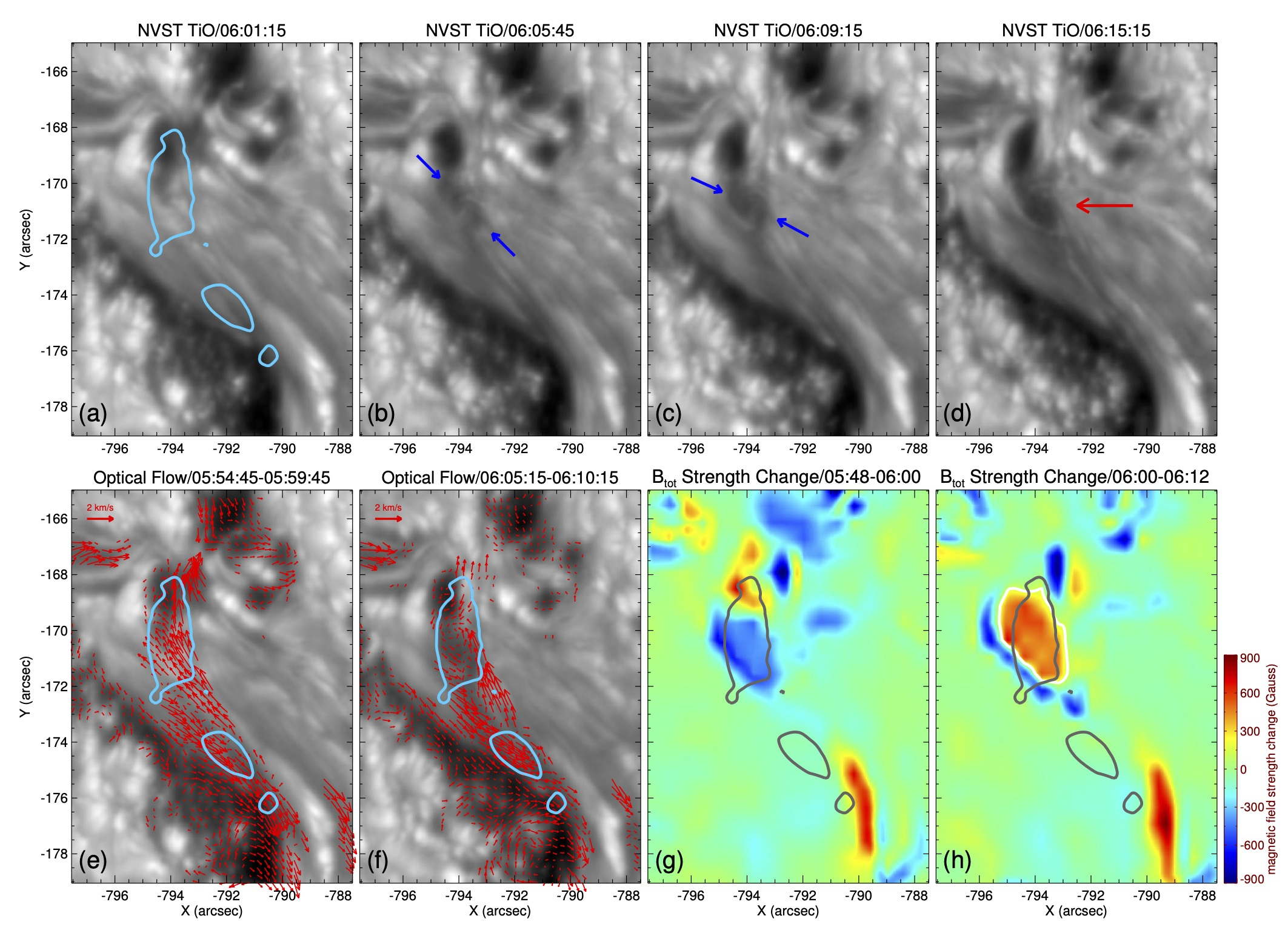
A recent study led by Dr. XU Zhe, an associate researcher at the Yunnan Observatories of the Chinese Academy of Sciences (CAS), along with his collaborators, has provided high-resolution observations of a C9.3-class white-light solar flare, offering new insights into its effects on the solar photosphere. This study was published in The Astrophysical Journal Letters.
On September 11, 2023, a white-light flare occurred in the National Oceanic and Atmospheric Administration (NOAA) Active Region 13431, located near the eastern limb of the Sun. Although this flare was classified as a relatively moderate C9.3 event — typically deemed insufficient to produce white-light emission — it displayed distinct white-light enhancements. By utilizing advanced solar observatories such as the New Vacuum Solar Telescope (NVST), the ASO-S satellite, and the CHASE satellite, the researchers captured the detailed evolution of this unusual flare.
High-resolution TiO band observations from the NVST revealed two bright white-light kernels connected by filamentary structures that aligned with the penumbral filaments of a nearby sunspot, indicating a significant contribution from deeper layers of the photosphere. Notably, the researchers noted sudden vortex motions and rapid magnetic field amplification at the white-light flare kernel. These phenomena suggest that the released energy was quickly transported from the corona to the photosphere through Alfvén wave pulses.
These transient photospheric vortex flows indicate the arrival of Alfvén wave pulses propagating through the solar atmosphere. They not only enhanced the local magnetic field but may also have facilitated the penetration of non-thermal electrons into deeper atmospheric layers, resulting in the observed white-light emission.
Hard X-ray imaging spectroscopy from the ASO-S satellite revealed non-thermal electrons with energies below 50 keV—energies insufficient to solely heat the lower photosphere. This finding supports a hybrid mechanism in which both Alfvén waves and electron beams work together to drive flare energy deposition. Energy estimations indicate that Alfvén waves carried as much as 1030 ergs, sufficient to enhance local magnetic fields and accelerate particles.
Furthermore, a layer-dependent time delay was identified across different wavelengths observed in AIA 304 Å, Hα, and TiO bands. This layered timing aligns with theoretical models of Alfvén wave propagation from the corona to the lower atmosphere.
This study demonstrates that even C-class solar flares, under specific magnetic and atmospheric conditions, can produce detectable white-light radiation. The findings enhance our understanding of the formation thresholds of white-light flares and provide vital observational evidence for refining models of vertical energy transport in solar flares.
This work was supported by the Strategic Priority Research Program of CAS, and the National Science Foundation of China, among other sources.

General view of the flare SOL2023-09-11T06:01 in AR 13431. (Image by Dr. XU Zhe)

NVST TiO images illustrating the sudden vortex flow and magnetic field amplification in the white-light flare region. (Image by Dr. XU Zhe)

86-10-68597521 (day)
86-10-68597289 (night)

52 Sanlihe Rd., Xicheng District,
Beijing, China (100864)

